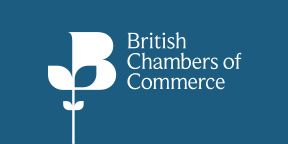BY:
SHARE:

While November 5th is known for fireworks and the foiling of the Gunpowder Plot, it's a story that goes beyond mere historical events. It's a tale of smuggling, licensing violations, and the evasion of government controls. Guy Fawkes and his co-conspirators, often portrayed as terrorists, were more than that. They were black-market operators who bypassed what we would now recognise as Customs and Export Laws. The plot, had it succeeded, would have turned a regulatory failure into a national catastrophe, a fact that still resonates with us today.
The year was 1605, and tensions between Protestants and Catholics simmered across England. King James I, who was at the time a Protestant monarch, had enforced strict laws against the Catholic population, including restrictions on worship, property rights, and civil participation. Amid this climate, a group of English Catholics decided to strike back. But what was their goal? Well, if we recount the tale, it was to blow up the House of Lords during the State Opening of Parliament, killing the King and much of the Protestant leadership in one massive detonation. It would come to be known as the Gunpowder Plot.
But an overlooked part of this story is the supply chain behind the sabotage. For this plot to succeed, the conspirators required at least 36 barrels of gunpowder, which, even in 1605, was a dangerous and highly regulated substance. Gunpowder was not freely traded. It was a controlled, military-grade material, and anyone acquiring or transporting it was subject to Crown licensing restrictions. Buying, storing, or moving gunpowder without authorisation was illegal and potentially treasonous. Guy Fawkes and his colleagues weren’t just stockpiling explosives; they were violating the 17th-century equivalent of export control laws, smuggling strategic materials, and operating outside regulatory controls designed to protect national security
.
At the time, England had already begun to regulate trade in sensitive goods. At that time, gunpowder was being used in both warfare and mining. It was tightly controlled to prevent any uprisings and to protect the state’s military advantage. While not formally called “dual-use goods” as we would call them today, the concept did exist. The Crown reserved the right to grant or deny permission to possess or trade such materials. The timing of the Gunpowder Plot is also interesting. Just a year earlier, in 1604, the Crown had issued the first official Book of Rates, a standardised Tariff list that laid out Customs duties on imported and exported goods. This Elizabethan innovation, carried forward into James I’s reign, marked a significant tightening of trade controls, and reflected rising concerns over smuggling, revenue loss, and the national security risks posed by unregulated imports.
Customs enforcement in the early 1600s would be considered limited by today’s standards. Still, it was far from non-existent, as Fawkes and his associates were circumventing a recently reformed Customs system designed to bring transparency and control to England’s growing trade network. Ports like London and Dover had Customs officials who collected duties and inspected cargo. Revenue from Customs formed a significant part of the Crown’s income, especially after the decline of feudal taxation. Any scheme to import or move goods, especially volatile substances like gunpowder, outside these structures was a direct challenge to the state. By the time of the Gunpowder Plot, England had been enforcing Customs duties for over 300 years, ever since Edward I established the first Custom House in 1275 to regulate the wool trade. But the early 17th century was a time when smuggling was a political and religious tool. English Catholics often trafficked in forbidden literature, relics, and even people, particularly priests. In this context, the movement of gunpowder wasn’t just illegal; it was part of a wider network of resistance that relied on evading Customs enforcement and operating in the shadows of trade regulation.
Guy Fawkes himself was a seasoned soldier. He had fought for Catholic Spain in the Netherlands and was an expert in munitions. In today’s terms, he would fall under export control watchlists for providing defence services to foreign powers. This raises another modern parallel: the transfer not just of goods, but of technical knowledge. Today, governments tightly regulate the export of military expertise, blueprints, and training. If a British explosives expert went abroad today to join a foreign military or paramilitary group, it would trigger serious legal and diplomatic consequences.
Fawkes wasn’t just a bomb carrier, he was a trained operative with foreign connections, using specialist knowledge gained abroad for subversive purposes, precisely the kind of risk modern export control regimes are designed to catch and contain.
The real lesson from the Gunpowder Plot isn’t just about failed terrorism, it’s about what happens when regulatory controls are bypassed. If Customs officers, licensing agents, or port inspectors had intercepted the acquisition or movement of the gunpowder, the plot might never have reached Westminster. Today, that lesson is more relevant than ever. Global trade has exploded in scale and complexity, and with it, the risks of misuse have grown. From semiconductors and drone parts to chemicals and encryption software, dual-use goods are everywhere. Governments maintain strict Customs and export frameworks not just for taxation, but to protect national and international security. The Gunpowder Plot, a historical event, is a stark reminder of the power and necessity of strong, modern regulation. This lesson is just as explosive today as it was in 1605.
So, this week, when you're at a fireworks display or lighting sparklers in the garden, spare a thought for the real logistics behind Bonfire Night then and now. The very fireworks we use to commemorate the failure of the Gunpowder Plot are themselves subject to tight import controls, explosive licensing laws, Customs declarations, and safety certifications. It’s a stark reminder that what began with barrels of smuggled gunpowder in a cellar under Parliament is now a lesson in the power and necessity of strong, modern regulation. Compliance, it turns out, is just as explosive a topic today as it was in 1605.
OneCall™ Email assistance as and when required; A one-call solution for all your import, export and customs enquiries. Export help. Import help. Customs help.
Stay informed about customs and international trade matters by subscribing to our OneCall™ service. This comprehensive offering includes a dedicated email helpline for support, timely practical updates direct to your inbox (Did You Know?), monthly UK Customs & Trade Briefings and access to an interactive members' area with an exclusive community for our subscribers.
International Trade Updates & Spotlight Newsletter
Subscribe to our free information emails covering international trade topics...
MORE INDUSTRY INSIGHTS...









